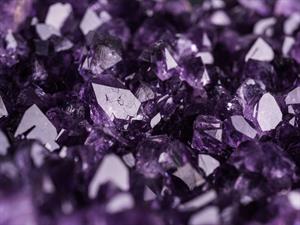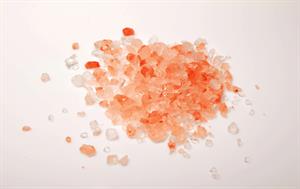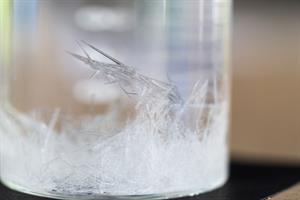PDF chapter test TRY NOW
In the purification of chemical compounds and seawater etc, crystallisation process is used. The common examples of the crystallisation process are snowflakes.
When the hot concentrated liquid is cooled, it forms its crystal, and this process is known as crystallisation. In this process, all the soluble impurities are removed.

Amethyst Crystals
The change in the state of any liquid to form crystals (i.e. organised solids) is called crystallisation. The formation of crystal occurs through evaporation, followed by solidification. Crystallisation is a purification process for impure salts.

The crystal form of a salt
Crystallisation is used to separate and purify substances, and in this process, large crystals are formed. The arrangement of particles in the crystals formed is well defined, as in the case of solids. Crystallisation is a physical process.
Preparation of crystals:
Example:
1. Take Copper sulfate in a container and add dimethylformamide(DMF) (solvent).
2. Add some more Copper sulfate to dimethylformamide(DMF) until it reaches the point where dimethylformamide(DMF) does not dissolve Copper sulfate further.
3. Heat the above container, and once dimethylformamide(DMF) reduces to half of the quantity added (evaporation)
4. Allows the above substance to cool (solidification).
5. Crystals are formed.
This method helps to separate the substance and liquid by crystallisation.
Activity:
Take some sugar and dissolve it in the beaker containing water. Heat the solution and dissolve more and more sugar in that beaker until no more sugar can be dissolved.
Now we can filter the solution and undissolved sugar. Allow the beaker containing the solution to cool. After some time, we can find the crystals of sugar formation in that beaker.

Crystal formation
